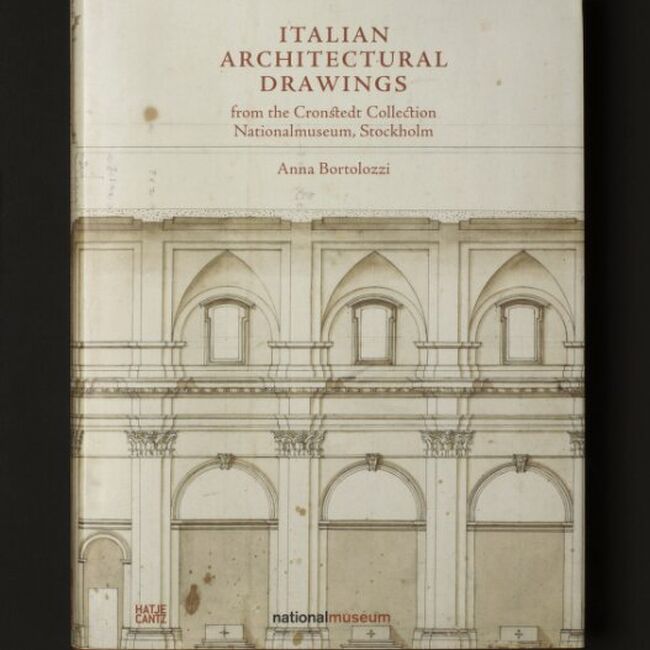test
Nya turer




Italian Architectural Drawings
Dive into a sample from Anna Bortolozzi's recent catalogue of the Italian architectural drawings in Nationalmuseum's Cronstedt collection.




Discover the development of ceramics
Here you can see and read about the different themes presented in the many display cases in The Design Depot.




Nationalmuseum's latest acquisitions
Nationalmuseum's collections are under constant development and are continuously being expanded with new acquisitions. Here we highlight some of the most interesting additions made in recent months.




The Hidden Story - What Research Can Tell
Here you can see the different methods used to map and analyze the materials in Eckersberg's painting The Cloister in S. Maria in Aracoeli, on display in the exhibition The Danish Golden Age presented in 2019. The results of the study are presented in detail.




The Portrait Miniatures in The Treasury
Here you can see and read about the different themes presented in the many display cases with portrait miniatures in The Treasury.
Italian Paintings




Italian Paintings - Three Centuries of Collecting
This online tour contains paintings from the first-ever catalogue raisonné of Nationalmuseum’s Italian paintings. Volume I was published in 2015.




Dutch Drawings in Swedish Public Collections
This online tour contains a selection of drawings from our richly illustrated catalogue of Dutch master drawings in Swedish public collections. Published in 2018 and the result of extensive research work.




The 16th century
In the 1500s, Europe saw a rise in centralised states with great royal power. Gustav Vasa was elected king of Sweden in 1523. He consolidated his power by converting Sweden to Protestantism and introducing a hereditary monarchy.




The 17th century
The Baroque originated in Catholic Europe but spread to Protestant areas and throughout the world. The style is known for its dynamic compositions, strong emotions and direct appeal to the senses.




1965–
Sweden's economic boom in the 1960s was followed by a recession in the 1970s. Working conditions for designers changed. Today, design has become a strategic tool, with some designers gaining global star status.




John Singer Sargent




The Sculptures
Explore and learn more about the sculptures on display in this online-tour.




1720–1770
When the new royal palace in Stockholm had to be decorated, French Rococo was the buzzword. Local artists and craftsmen contributed, with porcelain manufacturing and silversmithing flowering.




1770–1800
Johan Tobias Sergel’s stay in Rome marks a shift in Swedish art from Rococo to Neoclassicism. Other Swedes followed his lead, but it was not until Gustav III’s 1783-1784 Italian tour that Neoclassicism became established here.




1800–1870
The French Revolution changed European art. After 1800, crafts and visual arts were politicised, while Classicism continued to dominate.




1897
Major art and industry exhibitions were arranged in the 19th century. In spectacular halls of glass and iron, visitors marvelled at awe-inspiring artistic and technological innovations.




1870–1910
The way we experience consumer society and spectacle today has its roots in the cosmopolitan culture of the late 19th century. No single art style or direction dominated, as parallel currents existed side by side.




The turn of the 20th century
When the idea of the nation state was established in the mid-19th century, it became important to develop a national culture and history. In the 1890s, National Romantic artists created the works we now consider 'typically Swedish'.
The Danish Golden Age




The Hidden Story - What Research Can Tell
Here you can see the different methods used to map and analyze the materials in Eckersberg's painting The Cloister in S. Maria in Aracoeli, on display in the exhibition The Danish Golden Age presented in 2019. The results of the study are presented in detail.




Nordic Art Around the Turn of the Century 1900




1989 – Culture and Politics
1989 takes a broad look at what happened within the visual culture during the upheavals of 1989: an array of documentary photography, portraits, posters, videos and designs.




Self-Portraits and Portraits of Artist Friends
From early on, self-portraits became a vehicle for self-esteem and claims to social status. In portraits of friends, the subjects seem more relaxed. Sometimes only a sketch pad or portfolio reveals that this is not a landowner, but an artist.